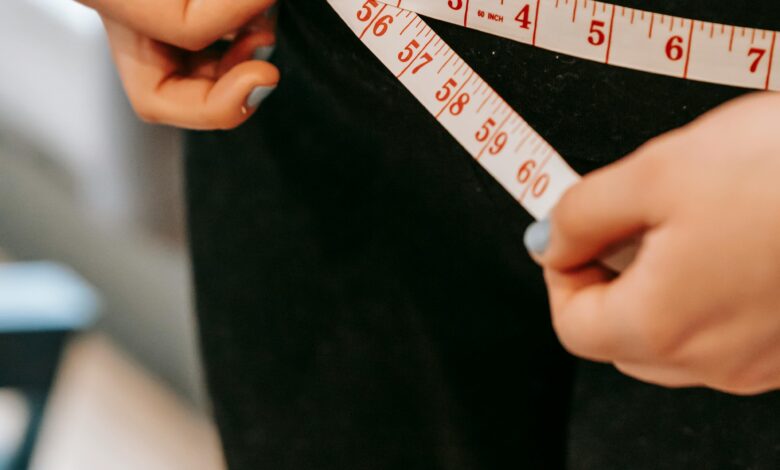The Role of Exercise in Weight Loss: What You Need to Know

Exercise is often touted as a cornerstone of weight loss, but its role can sometimes be misunderstood or oversimplified. While diet plays a critical part in shedding pounds, exercise offers unique benefits that go beyond calorie burning. It enhances overall health, boosts metabolism, and supports long-term weight management. In this guide, we’ll explore the science behind how exercise contributes to weight loss, the types of exercise that are most effective, and practical tips for incorporating physical activity into your routine.
The Science Behind Exercise and Weight Loss
At its core, weight loss occurs when you burn more calories than you consume—a concept known as a caloric deficit . Exercise helps create this deficit by increasing the number of calories your body burns. However, the relationship between exercise and weight loss is more nuanced than simply “burning calories.” Here’s why:
1. Calorie Burning
- Physical activity directly increases energy expenditure. For example, running, cycling, or strength training burns calories during the activity itself.
- The exact number of calories burned depends on factors like intensity, duration, and individual characteristics such as weight and fitness level.
2. Increased Metabolism
- Regular exercise can boost your resting metabolic rate (RMR), which is the number of calories your body burns at rest. Strength training, in particular, builds muscle mass, and muscle tissue burns more calories than fat tissue—even when you’re not exercising.
3. Improved Fat Oxidation
- Aerobic exercises like jogging or swimming improve your body’s ability to use fat as fuel, making it more efficient at burning stored fat during workouts and throughout the day.
4. Appetite Regulation
- Exercise can influence hunger hormones like ghrelin and leptin, helping regulate appetite and reduce overeating. Some studies suggest that moderate-intensity exercise may decrease cravings for unhealthy foods.
5. Behavioral Benefits
- Engaging in regular exercise fosters discipline and mindfulness about health, which can lead to better food choices and adherence to a balanced diet.
Types of Exercise for Weight Loss
Not all exercises are created equal when it comes to weight loss. Different types of physical activity target various aspects of fitness and contribute uniquely to your goals. Here’s a breakdown of the most effective forms of exercise:
1. Cardiovascular (Aerobic) Exercise
- What It Is : Activities that increase your heart rate and breathing, such as walking, running, cycling, swimming, and dancing.
- Why It Works : Cardio burns a significant number of calories during the workout and improves cardiovascular health.
- Examples :
- Brisk walking (30 minutes burns ~150-200 calories).
- Running (30 minutes burns ~300-400 calories).
- High-Intensity Interval Training (HIIT): Short bursts of intense effort followed by rest periods.
2. Strength Training
- What It Is : Exercises that build muscle through resistance, such as lifting weights, using resistance bands, or performing bodyweight exercises like push-ups and squats.
- Why It Works : Muscle tissue increases your resting metabolic rate, meaning you burn more calories even when you’re not active.
- Examples :
- Weightlifting sessions focusing on major muscle groups.
- Bodyweight circuits combining squats, lunges, and planks.
3. High-Intensity Interval Training (HIIT)
- What It Is : Alternating short bursts of high-intensity exercise with periods of low-intensity recovery.
- Why It Works : HIIT maximizes calorie burn in a short amount of time and triggers the “afterburn effect” (excess post-exercise oxygen consumption, or EPOC), where your body continues burning calories after the workout ends.
- Example : Sprinting for 30 seconds, then walking for 1 minute, repeated for 15-20 minutes.
4. Low-Impact and Flexibility Exercises
- What It Is : Activities like yoga, Pilates, or swimming that focus on flexibility, balance, and gentle movement.
- Why It Works : These exercises may not burn as many calories as cardio or strength training, but they reduce stress, prevent injury, and support recovery—key factors in maintaining consistency with your fitness routine.
How Much Exercise Do You Need for Weight Loss?
The amount of exercise required for weight loss varies based on your goals, starting point, and lifestyle. However, general guidelines from organizations like the American Heart Association and Centers for Disease Control and Prevention (CDC) provide a good starting point:
- Moderate-Intensity Exercise : Aim for at least 150 minutes per week (e.g., brisk walking, cycling).
- Vigorous-Intensity Exercise : Aim for at least 75 minutes per week (e.g., running, HIIT).
- Strength Training : Include muscle-strengthening activities at least two days per week.
For weight loss specifically, many experts recommend exceeding these minimums—up to 250-300 minutes of moderate-intensity exercise per week—to achieve meaningful results.
Common Myths About Exercise and Weight Loss
Misconceptions about exercise can derail your efforts or lead to unrealistic expectations. Let’s debunk some common myths:
1. Myth 1: Exercise Alone Is Enough for Weight Loss
- Reality : While exercise is crucial, diet plays a larger role in creating a caloric deficit. You can’t out-exercise a poor diet.
2. Myth 2: Spot Reduction Works
- Reality : Targeted exercises (e.g., crunches for abs) won’t eliminate fat from specific areas. Fat loss occurs systemically across the entire body.
3. Myth 3: More Exercise Always Equals Faster Results
- Reality : Overtraining can lead to burnout, injury, and hormonal imbalances that hinder progress. Balance is key.
4. Myth 4: You Must Work Out Every Day
- Reality : Rest days are essential for recovery and muscle repair. Consistency matters more than frequency.
Tips for Incorporating Exercise into Your Routine
Starting and sticking to an exercise regimen can be challenging, especially if you’re new to fitness. Here are some practical tips to make it easier:
1. Set Realistic Goals
- Start small and gradually increase intensity and duration. For example, aim for three 20-minute walks per week before progressing to longer sessions.
2. Find Activities You Enjoy
- If you hate running, try swimming, dancing, or hiking instead. Enjoyment increases the likelihood of sticking with it.
3. Create a Schedule
- Treat exercise like any other appointment. Block off time in your calendar and prioritize it.
4. Mix It Up
- Combine different types of exercise to keep things interesting and work multiple muscle groups.
5. Track Your Progress
- Use apps, journals, or wearable devices to monitor your workouts, steps, and improvements over time.
6. Stay Accountable
- Partner with a friend, join a class, or hire a personal trainer to stay motivated.
7. Focus on Non-Scale Victories
- Celebrate improvements in endurance, strength, flexibility, and mental well-being—not just the number on the scale.
The Bigger Picture: Exercise Beyond Weight Loss
While exercise is a powerful tool for weight loss, its benefits extend far beyond shedding pounds. Regular physical activity improves mental health, reduces the risk of chronic diseases (like heart disease, diabetes, and cancer), strengthens bones and muscles, and enhances overall quality of life. Even if the scale doesn’t move as quickly as you’d like, know that every step you take toward being active contributes to your long-term health and happiness.




